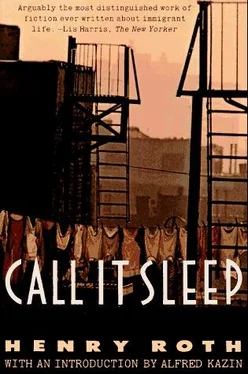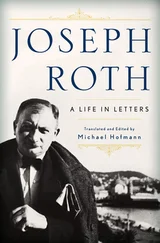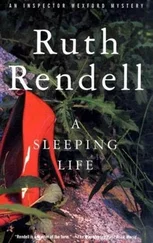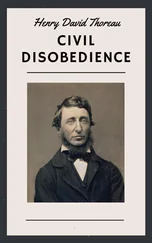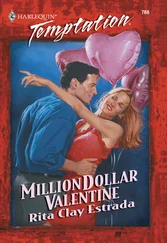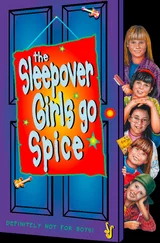Henry Roth - Call It Sleep
Здесь есть возможность читать онлайн «Henry Roth - Call It Sleep» весь текст электронной книги совершенно бесплатно (целиком полную версию без сокращений). В некоторых случаях можно слушать аудио, скачать через торрент в формате fb2 и присутствует краткое содержание. Год выпуска: 1992, Издательство: Farrar, Straus and Giroux, Жанр: Классическая проза, на английском языке. Описание произведения, (предисловие) а так же отзывы посетителей доступны на портале библиотеки ЛибКат.
- Название:Call It Sleep
- Автор:
- Издательство:Farrar, Straus and Giroux
- Жанр:
- Год:1992
- ISBN:нет данных
- Рейтинг книги:4 / 5. Голосов: 1
-
Избранное:Добавить в избранное
- Отзывы:
-
Ваша оценка:
- 80
- 1
- 2
- 3
- 4
- 5
Call It Sleep: краткое содержание, описание и аннотация
Предлагаем к чтению аннотацию, описание, краткое содержание или предисловие (зависит от того, что написал сам автор книги «Call It Sleep»). Если вы не нашли необходимую информацию о книге — напишите в комментариях, мы постараемся отыскать её.
, his first novel, in 1934, it was greeted with critical acclaim. But in that dark Depression year, books were hard to sell, and the novel quickly dropped out of sight, as did its twenty-eight-year-old author. Only with its paperback publication in 1964 did the novel receive the recognition it deserves.
was the first paperback ever to be reviewed on the front page of
, and it proceeded to sell millions of copies both in the United States and around the world.
Call It Sleep
Call It Sleep — читать онлайн бесплатно полную книгу (весь текст) целиком
Ниже представлен текст книги, разбитый по страницам. Система сохранения места последней прочитанной страницы, позволяет с удобством читать онлайн бесплатно книгу «Call It Sleep», без необходимости каждый раз заново искать на чём Вы остановились. Поставьте закладку, и сможете в любой момент перейти на страницу, на которой закончили чтение.
Интервал:
Закладка:
Both the diglossia and bilingualism of Jewish literature are particular variants of Bakhtin’s concept of heteroglossia in the novel. According to Bakhtin, prose fiction maintains an inner dialogue between different languages, so that a text in one language, from the linguistic perspective, contains within it other languages, which can be social, national, generic, and professional, among others. These languages do not exclude one another, but intersect in a variety of ways. “All languages of heteroglossia, whatever the principle underlying them and making each unique, are specific points of view on the world, forms of conceptualizing the world in words, specific world-views, each characterized by its own objects, meanings, and values.”10
Bilingualism and diglossia pose interesting mimetic challenges for the writer who aims for a community of readers beyond those who are competent in all of the language variants employed in his text. Moreover, in the Jewish literary tradition, multilingualism often means allusions, metaphors, and tropes that are derived from at least two widely divergent traditions, the Jewish and the non-Jewish worlds. This cultural situation necessitates various translation strategies for the author, ranging from literal translation from one language to another in the text (sometimes consciously underscoring the differences in world-view of the languages) to the felt sense of translation, as the language of the text contains within it the shades of the other absent language or languages. All authors dealing with a multilingual and multicultural reality have had to devise mimetic strategies for conveying a sense of foreignness, whether it be explicit attribution of speech in “translation,” selective reproduction of the source language, or more oblique forms, such as verbal transpositions in the form of poetic or communicative twists.11 The most challenging for the reader has been the transposition of a different set of values, norms, images, or allusions from an alternative culture.
The strategies for presenting this multicultural reality are varied within Jewish literature. In the case of Jewish-American writing, of which Henry Roth is a striking example, those writers who actually have some knowledge of an alternative Jewish literary tradition, in Hebrew or in Yiddish, have located their own works between two traditions, the English and the Yiddish, the Christian and the Jewish. This can express itself not only in linguistic borrowings by incorporation of phrases from the other language, but also by allusions to the other traditions, or to the borrowing of models and types from the other canon. Just as Yiddish poets in America placed themselves in the line of Whitman and Emerson, so writers like Henry Roth, Abraham Cahan, Saul Bellow, and Delmore Schwartz, composing in the English language, often draw on quotations from Jewish sources, intersperse Yiddish words, and turn their characters into types within two cultural frames of reference.
In Abraham Cahan’s landmark novel, The Rise of David Levinsky, the alternative tradition is the very theme of the work; the central protagonist traces his intellectual assimilation to the English world to his reading of a Dickens novel, but he continues to measure his moral development against the Jewish world that he has abandoned. In the writings of Saul Bellow, for example, this alternative tradition is evident in the intellectual repertoire of his central protagonists, who are repeatedly invoking European figures as predecessors, muses, and mentors. Just as Augie March is clearly a literary grandchild of Huckleberry Finn, so Herzog and Sammler are children of Montaigne and Dostoevsky, of Continental European thought and letters. In some cases it is the other language that haunts the English prose, at times artfully and self-consciously, as in the stories of Delmore Schwartz, when the English reads like a translation from the Yiddish; at other times unself-consciously, as in the Yiddishized English of Anzia Yezierska’s fiction, suggesting in the languages and syntax a merging of cultures. In one of Cynthia Ozick’s works, to cite yet another variation, the imminent extinction of Yiddish language and culture is the very subject of the story, as the Yiddish writer is left wholly dependent on translation itself to ensure some precarious survival.
In each of the above works, the emphasis is on a divided identification with more than one culture, and while this is not exclusively a Jewish literary characteristic, it has been one very dominant aspect of Jewish literature and culture.
Henry Roth’s novel Call It Sleep is a particularly interesting example of the part that multilingualism and translation play in Jewish literature. In that work, Roth uses languages other than English, as well as textual and cultural references outside of the English and American literary tradition. Roth grew up with Yiddish as the language of his home and neighborhood, among the Jewish immigrants on the Lower East Side, and along with many of them, he went on to study at City College. There he was introduced to the world of English literature. He obviously created his novel against the entire backdrop of English literature, and more specifically American literature, referring in his interviews to Shakespeare, Joyce, Faulkner, Frost, Steinbeck, Hart Crane, Daniel Fuchs, and James Farrell, among others. Roth writes for an implied reader who is well versed in English literature and the Western Christian tradition; although he has used a number of translation strategies for the non-English language and culture present in his text, his novel requires that the reader be familiar with some aspects of Jewish tradition. The full artistic scope of his work cannot be comprehended without this multiple cultural grounding. I would like to examine how Roth makes use of multilingualism and translation in his masterful novel as a way of identifying how the book partakes of more than one literary and cultural tradition, and how its artistic strategies express Roth’s specific response to the dilemma of the self-consciously Jewish author writing in a language steeped in non-Jewish culture.
The book is almost entirely narrated12 from the perspective of David Schearl, a boy of eight, with the exception of the Prologue and of one short section seen through the eyes of the Hebrew-school teacher. It is about an immigrant child’s quest for a personal and cultural identity apart from his parents; it traces the arduous and bewildering path of assimilation. It is a book written in the English language but experienced by the reader as if it were a translation, for David’s main actions and thoughts are experienced in Yiddish. The original experience in the source language is almost entirely absent. When the original language is reproduced, it is rendered in transliteration, a phonetic transcription, rather than an authentic recording using the actual alphabet, so that from the American reader’s perspective, the original language is both irretrievable and incomprehensible. Everything is experienced at a remove linguistically. While the Yiddish language is “home” for David and is associated with his parents, particularly with his mother, it can be an alien language for the reader. Occasionally Roth will provide a translation for the reader who is not familiar with Yiddish, but he will also reproduce the Yiddish for its own sake.
Although one does not have to know Yiddish to understand the book, one does have to be familiar with Jewish culture to understand all of the motifs and to appreciate the artistic pattern. From the point of view of the reader, “foreign” languages intruding on the English text are Yiddish, Hebrew, and Aramaic. While Yiddish is the spoken language of the home, the other two languages are reproduced only as liturgy, as quotations from Jewish textual sources. In other words, Roth treats Hebrew in the Jewish traditional sense of the sacred language, or loshn-koydesh. As Max Weinreich has noted, for Ashkenazic Jewry, Hebrew was the language of the sacred texts, of the immovable basis of study. Just as Yiddish was the language of speech, so Hebrew was the language of whatever had to be committed to writing.13 Just as Yiddish was the unmediated language, the one that the people used for face-to-face communication, so loshn-koydesh (non-modern Hebrew) was the mediated and bookish language.14 For the central protagonist, Hebrew and Aramaic are also foreign languages, the sounds being as incomprehensible to his ear as they would be to that of the English-speaking reader. Yet they are part of his home culture, because they are central components of his Jewish identity. Thus, David is bilingual and multicultural, his bilingualism consisting of Yiddish and English, and his multiple cultures consisting of Yiddish as home and everyday life, English as the street and the culture to which he is assimilating, and Hebrew and Aramaic as the mysterious languages, the sacred tongues, that represent mystical power to him and that initiate him into the Jewish world. Moreover, Yiddish, Hebrew, and Aramaic are all languages of his Jewish culture, while American English, the language of the author’s primary literacy, is the language of the “other” in that it is the language of Christianity. Roth’s novel charts the struggle with this linguistic and cultural “other,” as it speaks through the author and his Jewish child protagonist.
Читать дальшеИнтервал:
Закладка:
Похожие книги на «Call It Sleep»
Представляем Вашему вниманию похожие книги на «Call It Sleep» списком для выбора. Мы отобрали схожую по названию и смыслу литературу в надежде предоставить читателям больше вариантов отыскать новые, интересные, ещё непрочитанные произведения.
Обсуждение, отзывы о книге «Call It Sleep» и просто собственные мнения читателей. Оставьте ваши комментарии, напишите, что Вы думаете о произведении, его смысле или главных героях. Укажите что конкретно понравилось, а что нет, и почему Вы так считаете.
